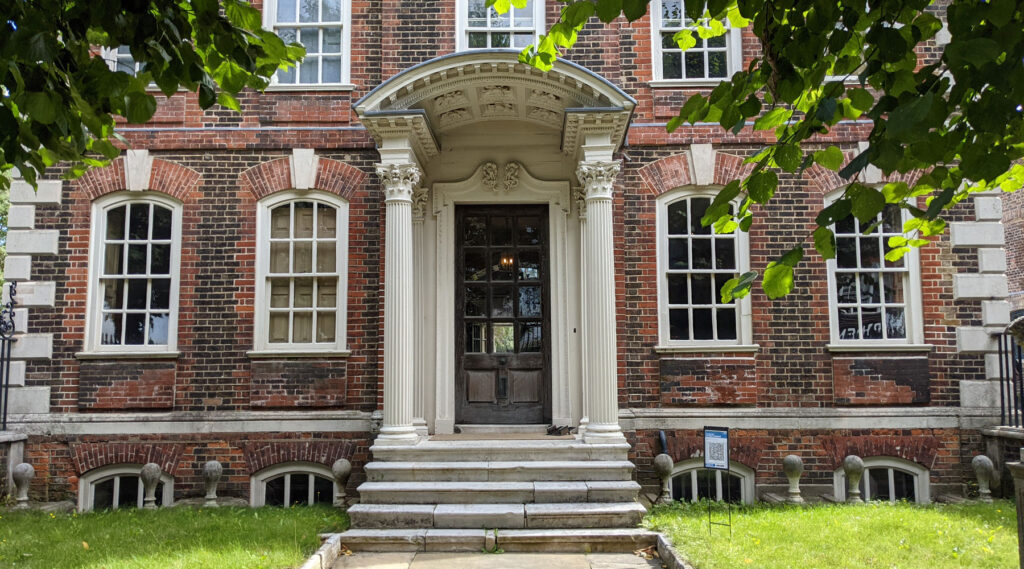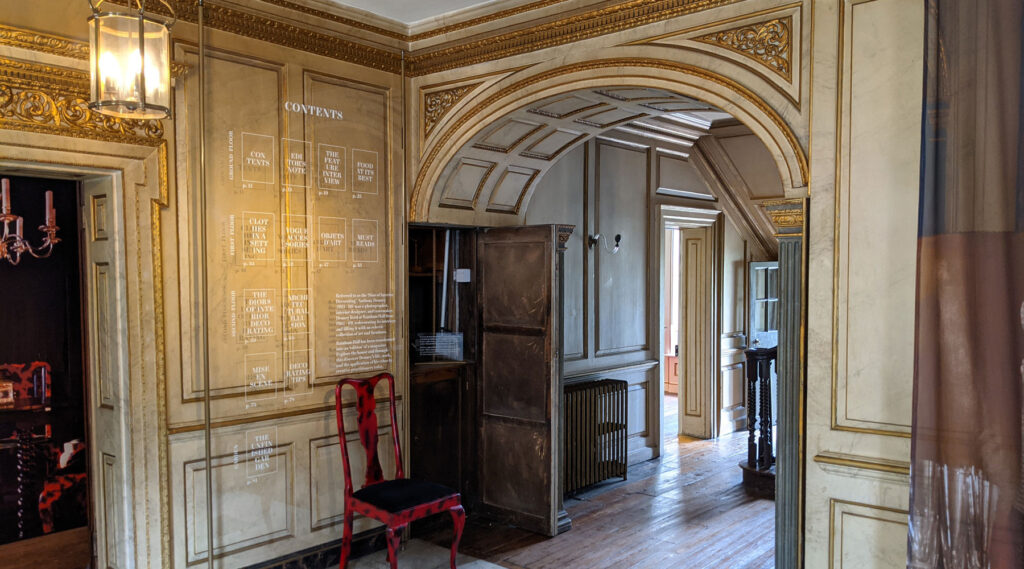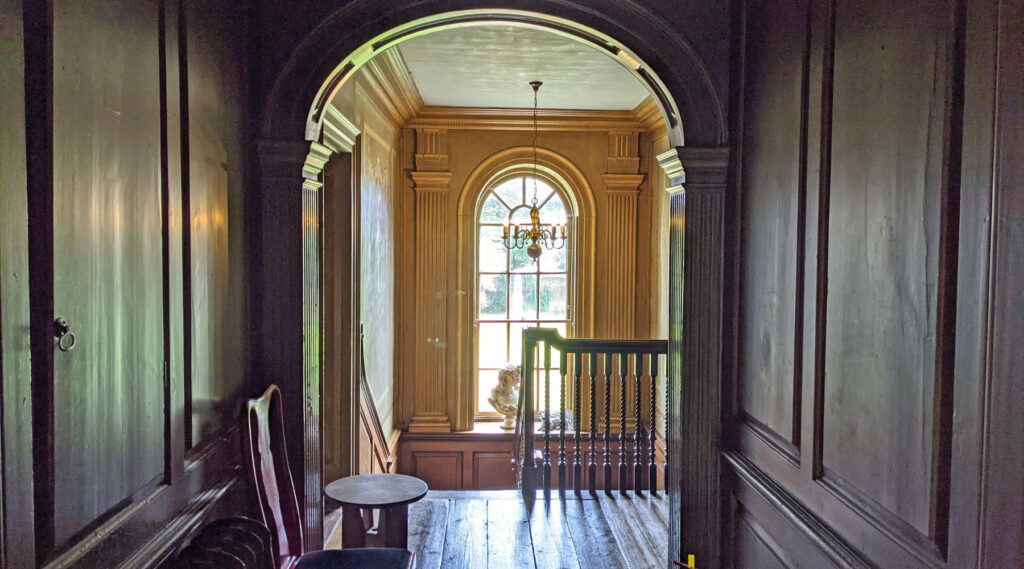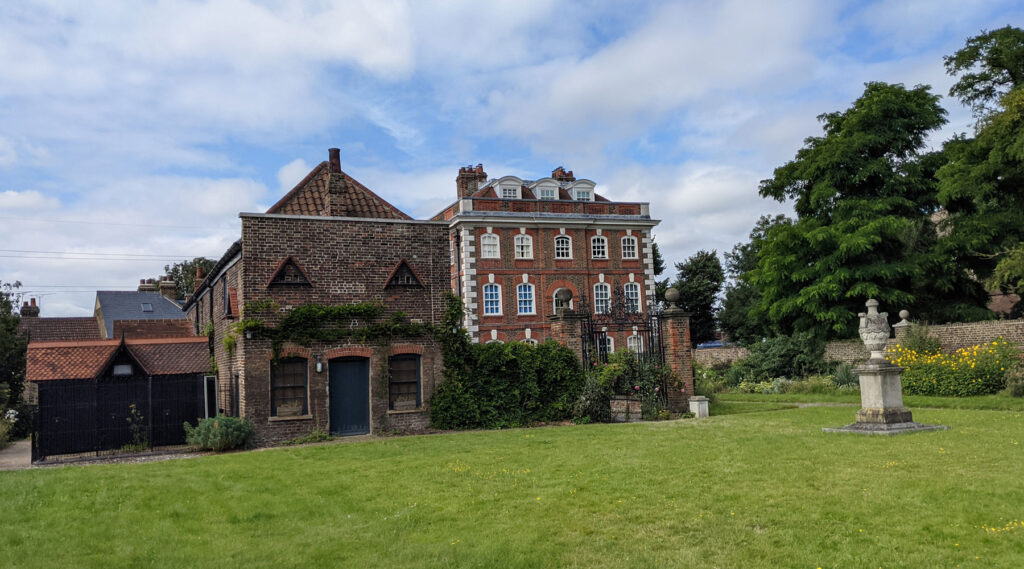A small town on the edge of East London with few attractions boasts, somewhat incongruously, a nearly 300-year old mansion house.
A few years ago it underwent major renovations and is now open regularly to the public.
Rainham Hall is a decent sized house built as a home and showpiece by John Harle, a South Shields born coal merchant who had previously moved to London.
In 1720/21 he married a widow from Stepney with a large stake in the South Sea Company. Whether he married a rich widow who sold her shares before the South Sea Bubble, or he was married to a wife who lost her fortune on the honeymoon is not known, but as a trader, John Harle was evidently sufficiently successful in his own right that in 1729 he built the hall, and also improve local docks.
The house is notable for having an unusually large hall for a building of this size, as it was used to show off materials from around the world – and the staircase, with its at the time very unusual mahogany bannister, is much larger than would be needed for such a house. It’s all there to show off the goods he traded in.
A slightly complicated succession of owners followed, as recounted by the guide who gives a good 20-minute introduction to the building, and although rarely lived in by the Harle family who tended to rent it out, they retained it until 1895.
The local vicar, son of a merchant rented the house, then bought it with daddy’s money, but it was then sold again until it was taken over during WW2 to offer a day nursery so that mothers could work in the war effort.
Offered to the National Trust in 1945, they declined the offer as they were short of cash, but later accepted it as it was being rented out to tenants, and they realised it was an opportunity to make some money.
It remained that way until 2011, with once-a-week tours, when a £3.5 million grant saw the building restored to sort of an earlier state and opened regularly, and the large back gardens which had always been private also opened to the locals to use.
Although the building’s interior has changed a lot over the centuries and had lots of tenants, many of those tenants were interesting in their own right, so now the building is used to show off the story of their lives.
At the moment, it’s given over to the influential Vogue photographer and designer, Anthony Denney. Apart from living in the building, he also redecorated, and it’s his designs that can still be seen in a number of rooms and the main hallway today.
The exhibition is not a biography of the life of the man, but more an atmospheric take on his work and the lifestyle of a fashion photographer. So expect rooms decorated with 1960s furniture — in a 1720s house, and some fashionable clothes on display, and plenty of notes about his approach to fashion photography.
It’s a curious blend of old and modern, and works. It’s a very clever way of showing off a house that will interest people who like old houses, while also luring in people with an interest in fashion and photography.
After the introduction talk, you’re left to wander around. A fat catalogue they used to charge for is now free as the exhibition was extended due to the lockdown closure so will run until the end of this year.
Out the back is the large garden, once private and now open to the public whenever the house is open.
Getting to Rainham Hall
Rainham Hall is just around the corner from Rainham railway station, which is a fairly quick, if somewhat infrequent, service on the C2C line.
Admission to the hall is £5 for adults, or free for National Trust members, and needs to be booked in advance.
Rainham as a town is pretty, but also pretty small. About 30 minutes walk south to the river are a cluster of famous concrete barges, and a riverside walk, or to the north is Hornchurch Country Park on the site of a former RAF base.










